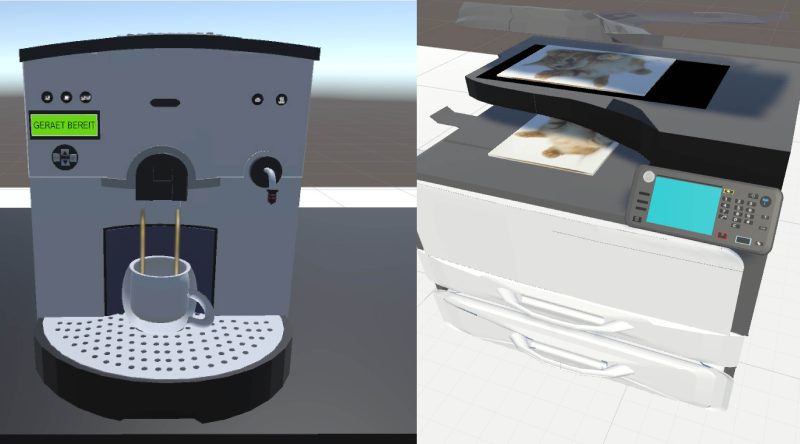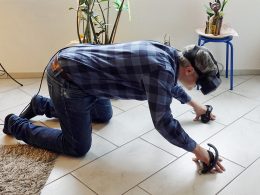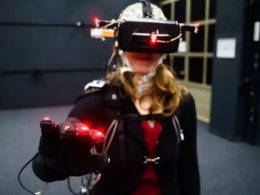Computer scientist at the University of Göttingen develops automated procedure to check whether a virtual room is user-friendly.
VR is conquering more and more areas of application. It is therefore important that virtual worlds are also user-friendly. Until now, manual tests with test subjects have been necessary to verify this, which can be both time-consuming and costly. Dr Patrick Harms from the Institute of Computer Science at the University of Göttingen has developed a technology that automatically recognises many usability problems in virtual spaces. The results have been published in the ACM Journal "Transactions on Computer-Human Interaction".
Getting coffee and operating the copier as a test environment
Harms chose two virtual scenarios to test his new technology: In the "coffee scene", the user had to fetch a cup, place it exactly under the coffee machine and press the appropriate button. In another virtual scenario, the user had to copy a piece of paper. The new automated evaluation technology runs in three steps. Firstly, the individual activities and movements of test subjects are recorded in detail using VR. The results are activity lists.
In the second step, the MAUSI-VR computer program developed by Harms automatically searches these lists for typical user behaviour. In the third step, the program evaluates this behaviour with regard to defined anomalies. "Among other things, this makes it possible to determine how well users of a VR are guided by it and whether they usually have to perform ergonomically unfavourable sequences during operation," says Harms. The programme also detects interaction problems that lead to users having to repeat or abort certain processes several times.
Everything is automated
The MAUSI-VR concept is based on preliminary work carried out by the "Software Technology for Distributed Systems" research group led by Prof Dr Jens Grabowski, Institute of Computer Science at the University of Göttingen, on the automated usability evaluation of websites and desktop software. Harms transferred this work to the virtual world and added to it. "Automated evaluations, unlike manual evaluations, can take place more frequently, more cost-effectively and without special preparations, both during the development of a VR and continuously after its release." This gives developers the opportunity to incorporate improvements to the VR into the next revision of the software, even at short notice.
Source: Media release









